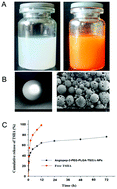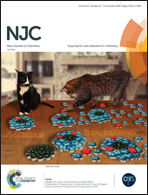An Angiopep-2 functionalized nanoformulation enhances brain accumulation of tanshinone IIA and exerts neuroprotective effects against ischemic stroke†
Abstract
Effective intervention against ischemic stroke requires delivery of potent neuroprotective drugs to the brain. Tanshinone IIA (TSIIA), the major bioactive ingredient extracted from the root of Salvia miltiorrhiza Bunge, is a proven neuroprotective compound, but its therapeutic application is hampered by chemical instability, low solubility, and inability to cross the blood brain barrier (BBB). Herein we report that a nanoformulation with a high-loading of TSIIA functionalized with Angiopep-2 effectively increased its brain accumulation by ∼12 fold, reduced infarct volume in an experimental stroke model by 2 fold, and augmented rat motor function scores after stroke by 60%. We confirm that the anti-ischemic stroke is mediated by inhibition of neuronal apoptosis, depletion of proinflammatory cytokines, and reversal of intracellular calcium [Ca2+]i overload in neurons. Moreover, we reveal for the first time that the underlying molecular mechanism for this formulation of TSIIA involves inhibition of the inflammatory signaling pathway HMGB1/TLRs/MyD88/NF-κB.



 Please wait while we load your content...
Please wait while we load your content...